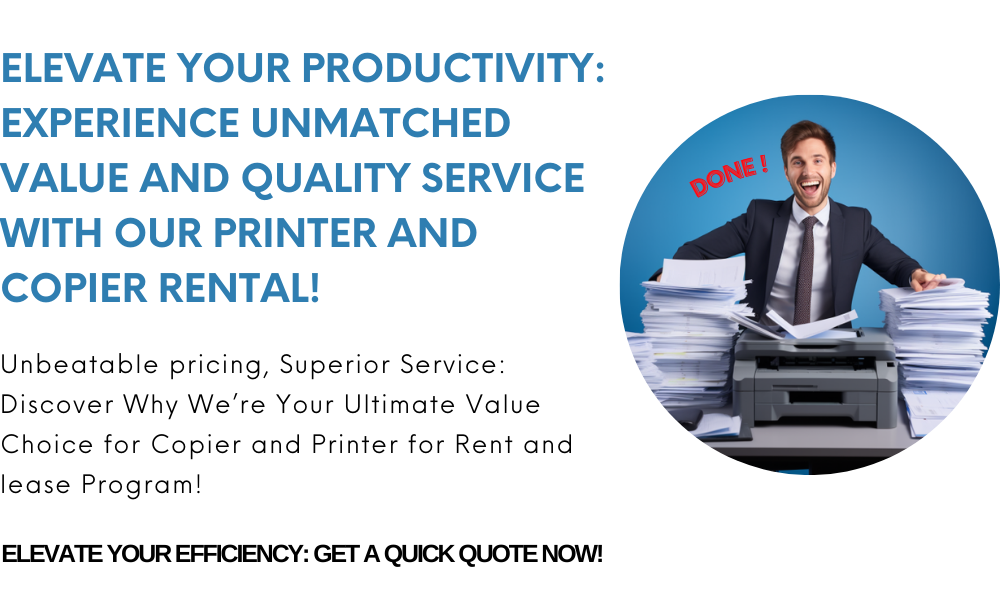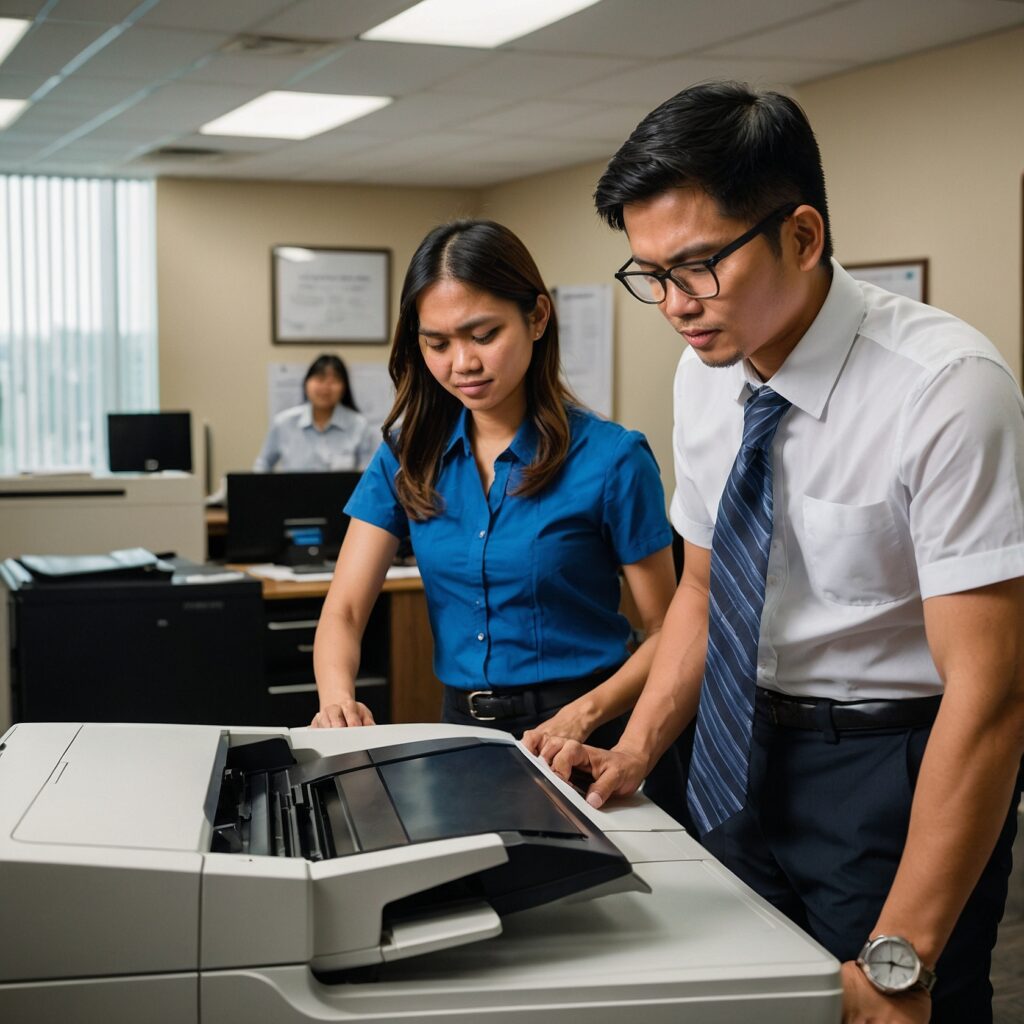

Explore the Copier Leasing for Business: A Smart Move for Modern Workplaces
In today’s fast-paced business environment, productivity and cost-efficiency go hand in hand. One often overlooked yet essential component of office efficiency is the copier or multifunction printer. These machines handle a range of tasks—from printing and scanning to document storage and network integration. But purchasing one outright can be costly, especially for small to medium-sized businesses. That’s where copier leasing comes into play. In this guide, we’ll explore the copier leasing for business and why it’s becoming the go-to solution for companies looking to stay lean and flexible.
What Is Copier Leasing?
Copier leasing is a financial arrangement where a business rents a copier or multifunction printer for a set period—typically between 12 to 60 months—instead of buying it outright. Leasing agreements often include service, maintenance, and upgrade options, making it a practical choice for businesses that want access to high-end technology without the hefty upfront cost.
Why Explore the Copier Leasing for Business?
There are several compelling reasons to explore copier leasing for business use:
1. Cost-Effective Operations
Leasing reduces the need for a large initial capital outlay. Instead of spending thousands of pesos on purchasing equipment, businesses can pay manageable monthly fees. This helps maintain healthy cash flow and enables reallocation of capital toward other growth initiatives.
🔗 Explore cost-saving strategies here
2. Predictable Budgeting
Monthly lease payments make budgeting easier. Most leasing contracts bundle maintenance and repair costs, eliminating surprise expenses and allowing you to plan your office expenses with confidence.
🔗 Learn how to budget wisely for copier rentals
3. Access to the Latest Technology
Leasing enables businesses to upgrade their equipment at the end of a lease term. This is ideal for staying current with evolving copier technology without continually buying new machines. Features like wireless printing, secure document access, and eco-efficient modes are easier to access via leasing.
Comparing Leasing vs. Buying: Which One is Better?
One of the most common questions business owners ask is whether it’s better to lease or buy a copier. The answer depends on the nature and size of your operations.
Buying a Copier
Pros: Full ownership, long-term savings
Cons: Large upfront cost, technology depreciation, maintenance responsibilityLeasing a Copier
Pros: Lower upfront cost, includes maintenance, tech upgrades
Cons: Long-term leasing can be more expensive over time
🔗 Read this cost comparison guide
Key Factors to Consider Before Leasing
To make an informed decision, consider the following factors:
1. Volume and Usage
How much printing, scanning, and copying does your office do on a daily or monthly basis? Businesses with high print volumes benefit more from commercial-grade copiers, which are usually cost-prohibitive to buy but affordable to lease.
2. Length of Lease
Typical lease terms range from 12 to 60 months. Shorter leases provide flexibility but may come with higher monthly costs. Longer leases lower monthly fees but tie you to the same machine for several years.
3. Maintenance and Service Inclusions
Choose a lease that includes regular maintenance, quick response times for service, and free parts replacement. This ensures minimal downtime and sustained productivity.
🔗 Explore key cost factors affecting copier rental prices
4. Scalability
As your business grows, your printing needs may also increase. Leasing allows for easier upgrades and scaling without major financial burdens.
Types of Copier Lease Agreements
There are two main types of leasing options to explore:
1. Operating Lease
Ideal for short- to mid-term needs, an operating lease allows you to return the copier at the end of the lease. It’s more affordable and suitable if you anticipate needing upgraded equipment soon.
2. Capital Lease
This is closer to ownership. You may have the option to purchase the copier at the end of the lease term, usually at a discounted rate. This is suitable for businesses that plan to keep their copiers long-term.
🔗 Understand how to analyze lease terms for cost-efficiency
Benefits of Leasing for SMBs
For small and medium businesses (SMBs), copier leasing offers several unique advantages:
No Heavy Investments – Makes high-quality equipment accessible
Flexible Terms – Adapts to evolving business needs
Bundled Services – Fewer things to worry about
Tax Benefits – Lease payments can often be written off as operating expenses
Tips for Choosing the Right Copier Leasing Partner
To maximize your copier leasing experience, follow these best practices:
Check Reviews and Referrals – Partner with leasing companies that have a strong reputation and client support.
Understand the SLA – Service Level Agreements should clearly define maintenance frequency, response time, and replacement policies.
Evaluate Exit Terms – Know what happens at the end of the lease. Can you upgrade, renew, or buy the unit?
Compare Multiple Quotes – Don’t settle for the first offer. Compare packages and ask for customized solutions based on your business profile.
Real-World Example: Copier Leasing in Action
Let’s say a growing real estate agency in Metro Manila needs a reliable copier for printing property documents, client brochures, and internal forms. Instead of spending ₱150,000 upfront for a high-volume multifunction copier, they opt for a 36-month lease with monthly payments of ₱4,500. The plan includes:
On-call maintenance
Free toner replacements
Option to upgrade after 3 years
Result? The business avoids capital strain, stays operationally efficient, and receives professional-grade support throughout the lease period.
Final Thoughts
In a business climate that demands flexibility, efficiency, and innovation, leasing a copier is more than just a practical decision—it’s a strategic one. Whether you’re a startup looking to cut costs or a large enterprise seeking modern equipment with reliable service, exploring copier leasing can unlock significant value.
Explore the copier leasing for business today and position your company for smarter workflows and better financial health.
✅ Ready to Get Started?
Explore tailored leasing solutions that fit your business needs.
🔗 Visit Marga.biz for leasing options and insights